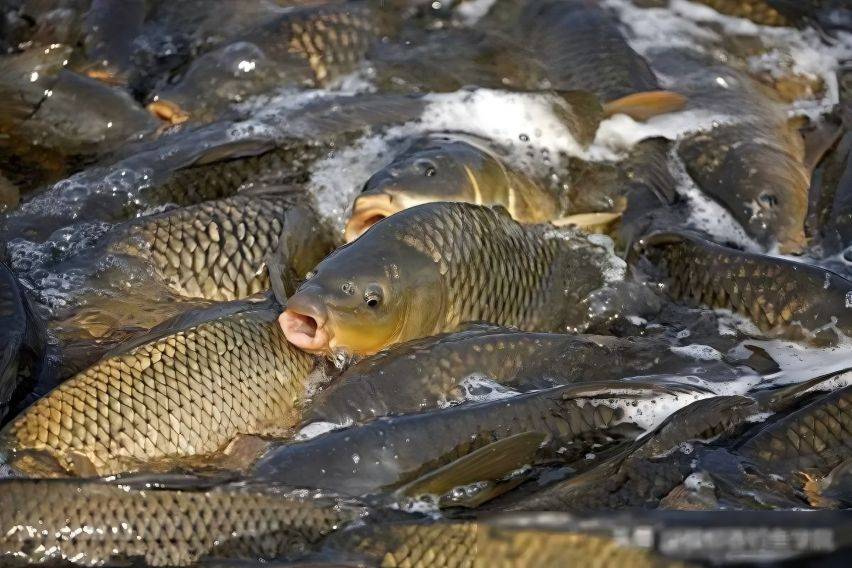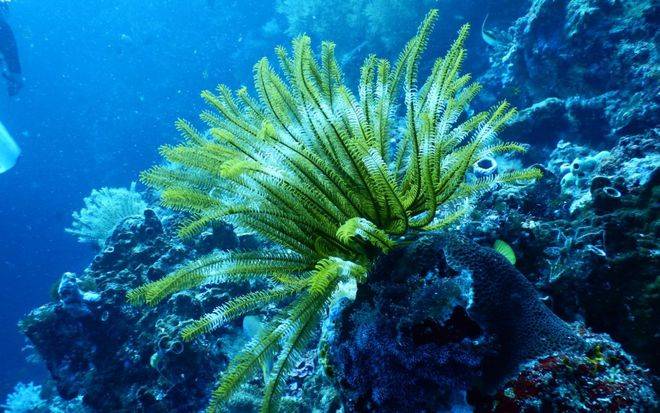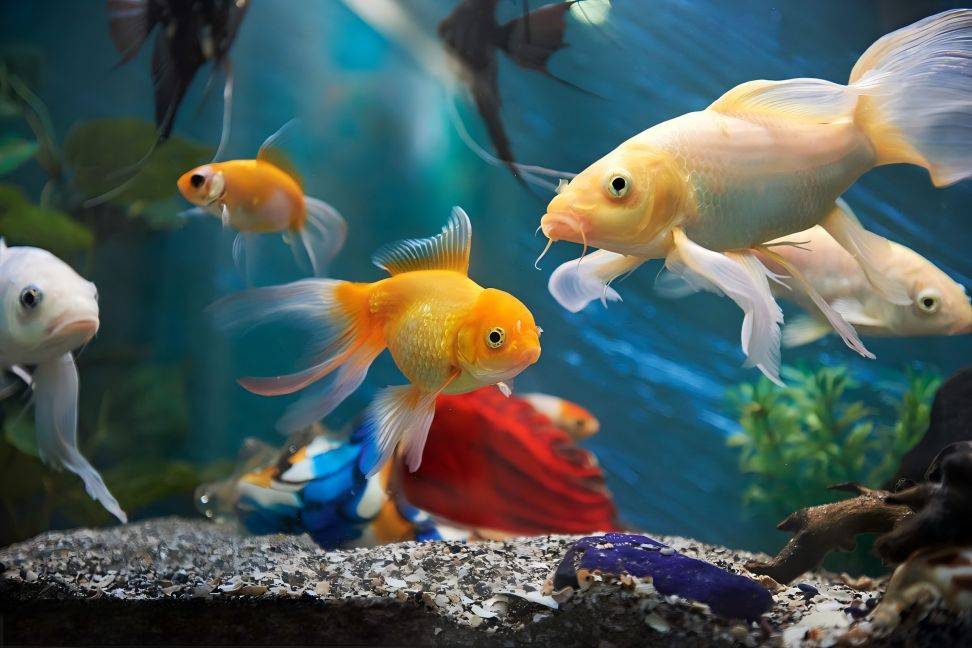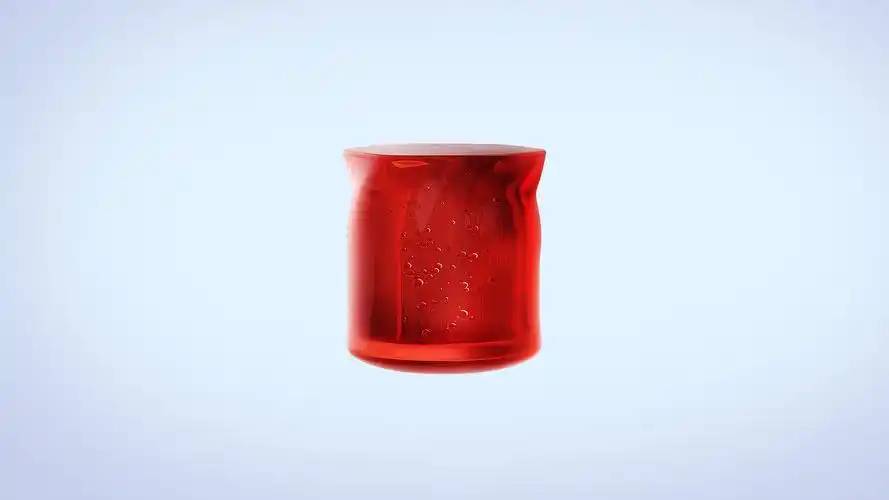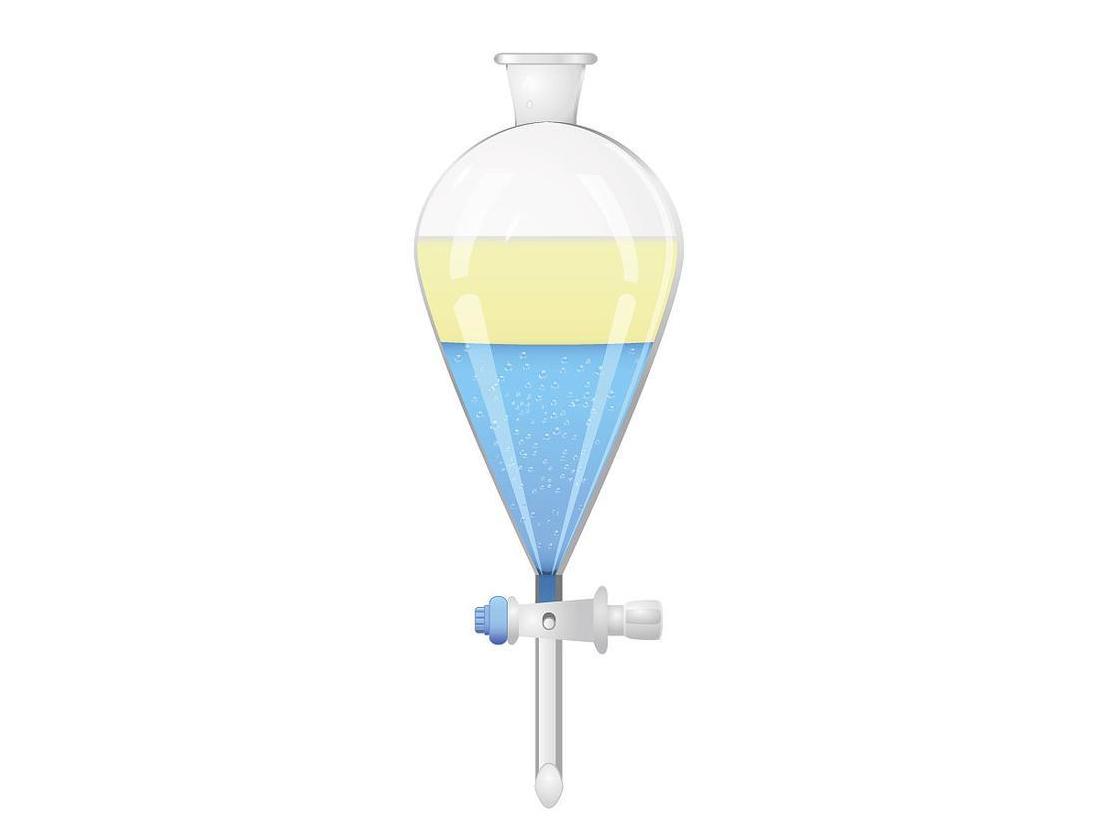Astaxanthin What Is It Good for Aquaculture?
Astaxanthin, whose chemical name is 3,3-dihydroxy-beta,beta-carotene-4,4-dione and molecular formula is C40H5204, is widely found in the living world, especially in aquatic animals such as shrimp, crab, fish and the feathers of birds. Astaxanthin is a xanthophyll that is one of the most widely distributed in the animal kingdom. It is pink in color and has unique coloring properties. It can also promote the production of antibodies and enhance the animal's immunity. In terms of its ability to resist oxidation and eliminate free radicals, it is more powerful than β-carotene. It is water-soluble and lipophilic, and easily soluble in organic solvents such as carbon disulfide, acetone, benzene and chloroform. Astaxanthin is a carotenoid-like additive with great potential, and has broad prospects in the fields of aquaculture, food, feed, cosmetics and medicine. This article focuses on its application in aquaculture.
1 Astaxanthin production
1.1 Extraction of astaxanthin from aquatic processing waste
According to reports in the United States, the extraction of astaxanthin, astaxanthin esters and shrimp red pigment from crayfish waste has an output rate of up to 153 ug/g waste. It should be noted that the lime in the waste will affect the production of astaxanthin, so it should be removed as much as possible during extraction. In recent years, countries such as Norway have used ensiling technology to treat aquatic waste, which has increased the recovery rate by 10% and greatly improved purity. It has been proven that adding inorganic or organic acids during ensiling will break the bond between astaxanthin and the protein or skeletal parts, thereby increasing the release of astaxanthin.
The main production process for extracting astaxanthin from aquatic processing waste: First, the waste, which is stored in a double-layered vinyl bag and kept at -70°C, is ground into a paste when producing astaxanthin. Soybean oil is added at a weight ratio of 1:1, mixed well, and the container is surrounded with lead or platinum to protect it from light. Slowly heat to 90 ° C and stop. Use low-temperature centrifugation (0 ° C, 11,000 r/min, 10 min) to collect the oil solution and allow it to separate into layers. Astaxanthin is present in the upper layer of the pigment solution. Use a liquid separator to separate and purify the astaxanthin. This method has harsh production conditions, high production costs, low yields, and the product is not very pure. Therefore, at present, only a few countries use this technology to produce astaxanthin.
1.2 Using algae to produce astaxanthin
Many types of algae can produce astaxanthin. During the growth of Haematococcus pluvialis, if there is a lack of nitrogen sources, astaxanthin will accumulate in the body; if bivalent iron ions are added during the cultivation process, its synthesis ability will be improved and the deposition of astaxanthin will be promoted. It has also been reported that blue light can induce the synthesis of carotenoids and astaxanthin. At present, the astaxanthin content in high-quality Haematococcus pluvialis accounts for more than 90% of the total carotenoid content. The content is related to the nature and intensity of light. Experiments have shown that the higher the light intensity, the higher the astaxanthin production, and that continuous light is better than intermittent light. However, the growth conditions of this algae are harsh, with high requirements for water quality, environment and light, and large-scale production is still difficult (Johnson et al., 1991).
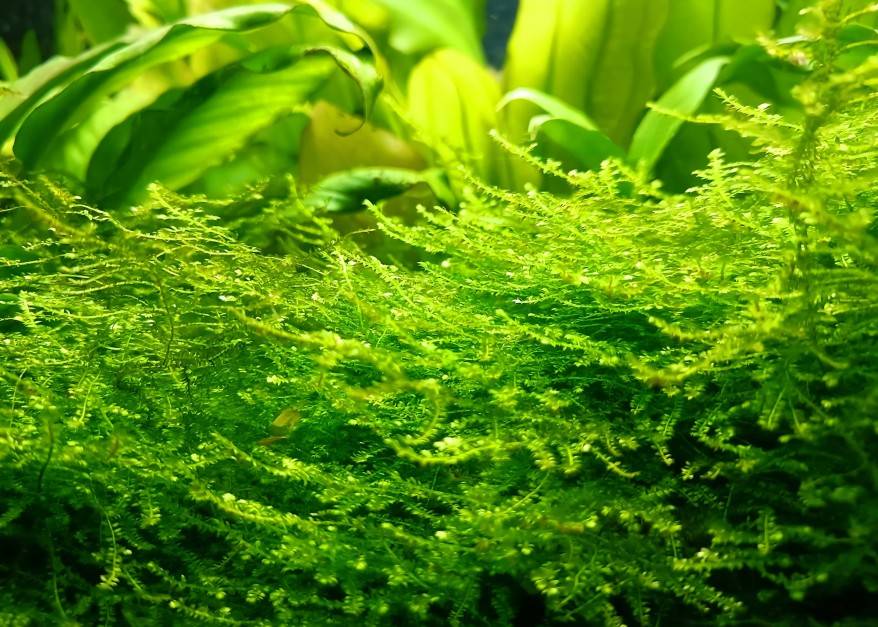
1.3 Production of astaxanthin using yeast
At present, it has been found that red yeast, red yeast BF-6, etc., can synthesize astaxanthin. Red yeast was first isolated by Phaff and others in the 1970s from the exudates of deciduous trees in Japan and the mountainous areas of Alaska, USA (Phaff et al., 1972). It is the only species in the phylum of fungi, the phylum of fungi, the subphylum of mucormycetes, the family of Cryptococcus, and the genus of red yeast. It reproduces by vegetative budding. The fungus can produce more than 10 types of carotenoids during fermentation, mainly astaxanthin, β-carotene, and “-carotene, of which astaxanthin accounts for 60% to 85%.
The optimal conditions for red yeast to produce astaxanthin: the carbon source is glucose and cellobiose; the nitrogen source is ammonium sulfate; the optimal culture temperature is 20 ~ 22℃; the optimal pH is 5.0; aerobic conditions are also preferred, and the oxygen supply rate should be higher than 30mmol/h. When the value is lower than this, the astaxanthin production will decrease significantly. The original strain of Rhodopseudomonas palustris has a low synthetic capacity, with a total carotenoid content of less than 500 μg/g cell dry weight (cDW), and astaxanthin at around 350 μg/g cDW. Johnson et al. increased the astaxanthin content to 814 μg/g by adding tomato juice (which contains astaxanthin precursors) to the culture medium.
Recently, Calo et al. added 0.1% methoxycarboxylic acid (a precursor of carotenoid synthesis) to the culture medium, and the astaxanthin and total pigment content increased by 400%. Meyer reported that the addition of acetic acid could increase the biomass of Rhodaffoeta yeasts, and the astaxanthin content in the cells reached 1430 μg/g cell dry weight (cDW). In China, Lü Yuhua and Jin Zhengyu, among others, used nitroso guanidine (NTG) to mutate the mutant strain 4-26, which significantly increased the total carotenoid production and the proportion of astaxanthin. Currently, the American companies Red Star and Euglena Bio use this yeast to produce astaxanthin.
Shi Anhui (1999) reported that using the sticky red yeast BF-6 isolated from vineyard soil as the starting strain, and after ultraviolet and ethyl methanesulfonate mutagenesis, the highest astaxanthin content produced by the mutant strain was 1. 3mg/ gcDW, its grape tolerance is 6%, and the astaxanthin yield can also reach 1.
25mg/ gcDW by fermenting with 2% molasses instead of glucose. The optimal fermentation temperature of this strain is 29-30°C, the optimal pH is 5.2-5.5, and the oxygen supply rate should be above 35mmkl/h. After adding tomato juice, the astaxanthin yield was as high as 1.43 mg/g DW. Recent foreign research has shown that a dark red yeast (phadotoralarubra) isolated from Bulgarian yogurt can increase astaxanthin production by 80 times compared to Rhodotorula glutinis under the same culture conditions. It also has less nutritional requirements and produces faster.
Astaxanthin is an intracellular pigment, and the cells must be broken before the animals are fed. To promote the release of the pigment, Okagbue and Lewis used autolysis with distilled water and citric acid. Gentles and Haard found in their experiments that the four methods of mechanically grinding (MY), enzymatically treating (EY), spray drying (SY) and extracting the pigment before feeding (C) all resulted in good coloring of the skin and muscles of sturgeon. After 8 weeks, the color of the fish tended to be darker for MY > EY > SY > C > control group. It seems that mechanical cell grinding is a simple and effective method. Some domestic scholars have also achieved good results using the hot hydrochloric acid cell crushing method.
1.4 Production of astaxanthin by chemical synthesis
Roche in Switzerland produces astaxanthin by chemical synthesis under the trade name Carophyll Pink, with an astaxanthin content of 5% to 10%. According to the literature, the precursor substance for the chemical synthesis of astaxanthin is (S)-3-acetyl-4-oxo-beta-ionone. This precursor is converted by reaction to a 15-carbon retinoid, and finally two 15-carbon retinoids react with a 10-carbon dicarboxaldehyde to synthesize astaxanthin (Widmer et al., 1981). Currently, only Roche uses this method to produce astaxanthin.
2 Application of astaxanthin in aquaculture
2.1 Excellent coloring effect
Astaxanthin is the main carotenoid pigment in marine crustaceans and fish. The rosy flesh color of seafood such as salmon and lobster is due to the high accumulation of astaxanthin in their bodies. However, farmed animals cannot synthesize astaxanthin themselves, and there is a lack of natural sources. Therefore, it must be added to their feed to supplement the pigment. One of the main uses of astaxanthin today is as a source of color in aquaculture. It was first used in salmon and trout, and is now widely used in various cultured objects.
2.1.1 Promoting the coloring of cultured shrimp
If the feed for cultured shrimp lacks astaxanthin, it will result in an unhealthy body color. Studies have shown that if shrimp lacking astaxanthin are fed a diet containing 50 × 10-6 (m/m) astaxanthin for 4 weeks, their body color will return to a normal dark blue-green, while the control group will still have a sickly color. Moreover, the former will have a bright red color after cooking, while the latter will have a pale yellow color, which is not conducive to marketing.
Yamada (1990) compared the coloring effects of three carotenoids, β-carotene, canthaxanthin and astaxanthin, on prawns. The results showed that when the same concentration of 100 × 10-6 (m/m) was added to the feed The highest accumulation of astaxanthin in the tissues of the shrimp was found when the shrimp were fed with the same amount of astaxanthin added to the feed at a concentration of 100 × 10-6 (m/m), which was 23% and 43% higher than that of canthaxanthin and β-carotene, respectively. If the amount of astaxanthin used is increased to 200 × 10-6 (m/m), the content in the tissues can reach a maximum of 29. 1 × 10 6 (m/m), which proves that astaxanthin is the carotenoid with the best coloring effect.
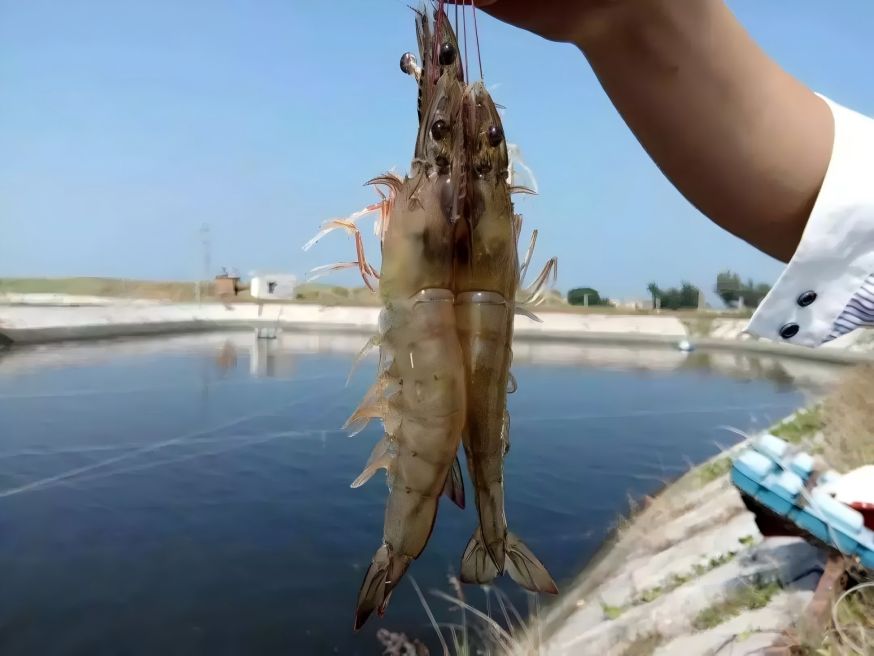
2.1.2 Promoting the coloring of farmed fish
Early studies found that adding astaxanthin to the feed can also make the skin and muscles of farmed fish such as salmon and sturgeon appear bright red. The reddish-pink coloring of the skin of wild pomfrets is mainly due to the presence of astaxanthin, while the astaxanthin content in farmed pomfrets that have not been fed astaxanthin is only 5% of that in the wild. Adding other carotenoids (such as β-carotene, lutein, canthaxanthin and zeaxanthin) to the feed does not give the bream a reddish coloration, nor does it convert to astaxanthin. The carotenoids are constantly lost from the skin and flesh of the bream. Therefore, astaxanthin must be fed to give farmed bream a reddish coloration.
No other product has had such a significant and long-lasting effect on the coloring of ornamental fish as natural astaxanthin from Haematococcus pluvialis. Ornamental fish can obtain a bright color by eating carotenoids. Ako and Tamaru (1999) found that after feeding an ornamental fish with a diet containing 100 × 10-6 (m/m) astaxanthin for one week, the yellow, maroon and black colors on the fish's body surface were significantly enhanced.
In addition, choubert and storebakken (1996) showed that the absorption and utilization of astaxanthin by cultured organisms is significantly better than that of other pigments. For example, the digestion and absorption of astaxanthin by rainbow trout is significantly better than that of canthaxanthin, and its maximum apparent absorption coefficient is more than twice that of canthaxanthin. When rainbow trout is fed with astaxanthin and canthaxanthin respectively to achieve the same coloring effect, , it is necessary to feed 72 × 10 - 6 (m/m) astaxanthin and only 60 × 10 - 6 (m/m) astaxanthin, which shows that astaxanthin is more efficient than astaxanthin in coloring.
2.2 Improve the survival rate of cultured objects
Adding astaxanthin as a feed additive can improve the survival rate of cultured animals through various channels, such as enhancing immunity, improving tolerance to harsh conditions, and improving adaptability to changes in environmental conditions. Merchie et al. (1998) studied the demand for carotenoids in feed and found that adding astaxanthin to the feed can greatly improve the immunity of cultured animals, enhance disease resistance, and improve survival rate. It can also enhance the passive resistance of late shrimp larvae to salinity and reduce the damage caused to aquatic animals by ultraviolet radiation.
In addition, chien (1996), when studying the biological effects of astaxanthin on shrimp, pointed out that astaxanthin accumulates in tissues as a pigment, which can store oxygen between cells and enhance the tolerance of fish and shrimp to high chlorine and low oxygen environments. It has also been reported that the biological function of astaxanthin is stronger than β-carotene. When 100 × 10-6 (m/m) of β-carotene is added to shrimp feed, the survival rate is only 40%, while the survival rate can be increased to 77% by adding the same amount of astaxanthin. Yamada's (1990) research also showed that if 100 × 10-6 (m/m) astaxanthin is added to the daily feed, the survival rate of prawns can reach 91%, while the control group is only 57%. Jin Zhengyu et al. (1999) pointed out in a feeding experiment with natural astaxanthin that the survival rate of Litopenaeus vannamei could be increased by about 21.66% by using astaxanthin as a feed additive.
Christiansen et al. (1995) studied the effect of feed on the survival rate of Atlantic salmon and found that when the astaxanthin content in the feed was less than 1 × 10-6 (m/m), there was a massive mortality of fish fry, and the survival rate was less than 50%. However, in the control group fed an adequate amount of astaxanthin, the survival rate of fish fry could reach more than 90%.
Pan et al. (2001) studied the effects of astaxanthin feeding and aquaculture water conditions on the coloring, growth and survival rate of Penaeus monodon and pointed out that in addition to increasing the coloring of prawns, astaxanthin feeding can also promote growth and increase survival rate. Experimental results show that in order to maintain high survival rates during the late larval growth of spot-knob shrimp and when the body content of astaxanthin decreases, the shrimp should be fed a certain concentration of astaxanthin.
2.3 Promoting growth, reproduction and development of cultured objects
Astaxanthin has a significant promoting effect on the growth of cultured organisms. Jin Zhengyu et al. (1999) reported that feeding astaxanthin can significantly increase the weight gain rate of Litopenaeus vannamei. Experiments have shown that the weight gain rate after 5 weeks of feeding is about 14.48%.
Christiansen et al. (1995) conducted a study on the effects of different feeds on the growth and survival rate of Atlantic salmon. The results showed that when the astaxanthin content of the daily feed for Atlantic salmon fry was higher than 5.3 × 10-6 (m/m), they maintained normal growth, while below this value, the fry grew slowly.
In addition, if the feed for cultured shrimp is fed with insufficient astaxanthin, the shrimp will become sick, hindering their normal growth and development. Feeding such sick shrimp with 50 × 10-6 (m/m) astaxanthin for 4 weeks will restore normal growth, and the amount of astaxanthin in their tissues will increase by more than 300%. 26. 3 × 10 - 6 (m/m) of carotenoids could be isolated from the shells. The increase in the control group was only 14%, and the carotenoid content in the shells was (4 - 7) × 10 - 6 (m/m).
Petit et al. (1997) studied the effect of feeding astaxanthin on the late growth of prawn larvae and their molting cycle, and found that feeding astaxanthin can shorten the molting cycle of late prawn larvae. Astaxanthin can also be used as a fertilisation hormone to improve egg quality. Adding astaxanthin to the feed can improve the survival rate of juvenile shrimp and the buoyancy and survival rate of fish eggs. It can also increase fertilization rates, egg survival rates and growth rates during the salmon fry stage, protect eggs from the effects of harsh conditions and promote their growth and development. Vassallo et al. (2001) studied the effect of astaxanthin on the spawning of cultured subjects and found that adding 10 × 10-6 (m/m) astaxanthin to the feed can increase the spawning rate.
2.4 Improving the physiological functions of farmed animals
Adding astaxanthin to the feed can improve the health of farmed rainbow trout, giving them better liver function, and also strengthen the structure of red tilapia liver cells and glycogen storage. Rellulka (2000) studied the effect of astaxanthin on the growth rate, various blood indicators and some physiological functions of rainbow trout, and found that feeding astaxanthin can improve the hematopoietic function and the metabolism of lipids and calcium in rainbow trout. Amar et al. (2001) added various carotenoids such as astaxanthin to the diet of rainbow trout to study the effect of these additives on the immunity of the fish. The experiment showed that among various carotenoids, carotenoids, astaxanthin and β-carotene can improve both humoral indicators such as serum defensins and lysozyme activity, and cellular indicators such as bacteriophage phagocytosis and non-specific cytotoxicity.
2.5 Improving the nutritional value of farmed animals
The nutritional value of fish and shrimp is also increased by the addition of astaxanthin. In a study by Christiansen et al. (1995) on the effect of astaxanthin supplementation in feed on the physiological status of Atlantic salmon, such as immunity, it was found that after Atlantic salmon fed astaxanthin-containing feed, the vitamin A, C and E content in certain tissues increased significantly. 3 × 10-6 (m/m), the lipid content also increased significantly; when 13. 7 × 10-6 (m/m) astaxanthin was added, the lipid content of Atlantic salmon meat could be increased by
by 20%. In the European and American markets, aquatic products with astaxanthin as a feed additive are very popular, and their prices are much higher than those of ordinary fish and shrimp.
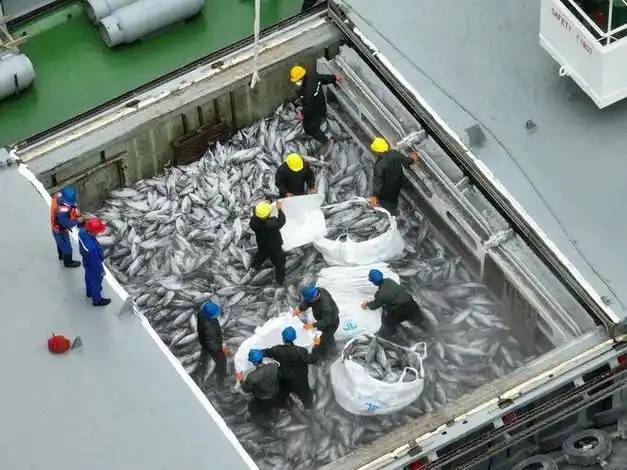
2.6 Facilitates the transportation and preservation of aquatic products
During the refrigeration process of aquatic products, lipid oxidation is the main cause of meat spoilage. Therefore, the strong antioxidant properties of astaxanthin also play a positive role in the transportation and preservation of aquatic products. Jense et al. (1998) studied the antioxidant function of carotenoids such as astaxanthin in the refrigeration and preservation of aquatic products.
The results showed that rainbow trout fed different concentrations of astaxanthin Jense et al. (1998) studied the antioxidant function of carotenoids such as astaxanthin in the refrigeration and preservation of aquatic products. The results showed that there were significant differences in lipid oxidation during the refrigeration process in rainbow trout fed different concentrations of astaxanthin. In addition, during the storage of salmon and trout after capture, salmon is prone to rancidity because it contains little astaxanthin, while trout, which contains more astaxanthin, stores better under the same conditions. It can therefore be inferred that adding astaxanthin to the feed and increasing its content in the bodies of aquaculture subjects can reduce the use of chemical preservatives to a certain extent. It can also be used as a special, highly effective “biological preservative” to make aquatic products last longer, and it is absolutely safe for the human body.
Astaxanthin has strong antioxidant capacity and powerful physiological functions, and has been widely used in aquaculture abroad. The safety of natural astaxanthin has been widely recognized, and it will help the further development of the aquaculture industry despite the high “green barriers”. At present, the annual demand for astaxanthin products in developed countries is at least several tens of tons, and the market demand is far from being met. The global demand for aquatic products is increasing by 24% annually, and the annual market volume for astaxanthin in salmon feed alone is more than 185 million US dollars, with an annual growth rate of 8%, showing great market potential. Therefore, astaxanthin as a feed additive in aquaculture is bound to attract more and more attention and be adopted by more and more aquaculture farmers, with broad application prospects.
Reference:
[1]Lorenz R T,cysewski G R . commercial potential for Haematocaccus microalgac as anatutal source of astaxanthin [J]. Tibtech,2000,18:160 ~ 167 .
[2]Naguib Y M A. Antioxodant activities of astaxanthin and related carotenoids[J].J Agric Food chem,2000,48:1 ~ 150
[3]Johnson E A,An G H . Astaxanthin from microbial sources[J]. critical Reviews in Biotechnology,1991,11:297 ~ 326
[4] Jin Zhengzi, Guo Shidong, Lv Yuhua. Effect of adding astaxanthin-rich favus yeast to feed on the body color and growth of roe shrimp [J]. Feed Industry, 1999, (20): 29-31.
[5] Wang Jufang, Wu Zhenqiang, Liang Shizhong. The physiological functions and applications of astaxanthin [J]. Food and Fermentation Industry, 1999, (2): 66-69
[6] Wei Dong, Zang Xiaonan. Research progress and industrial modernization of large-scale cultivation of Haematococcus pluvialis for natural astaxanthin production [J]. Chinese Journal of Oceanic Drugs, 2001, 83: 4-8
[7]Menasveta P . correction of black tiger prawn(Penaeus monodon) coloration by astaxanthin[ J ]. Aquaculture Engineering,1993,12:203 ~ 213


 English
English French
French Spanish
Spanish Russian
Russian Korean
Korean Japanese
Japanese